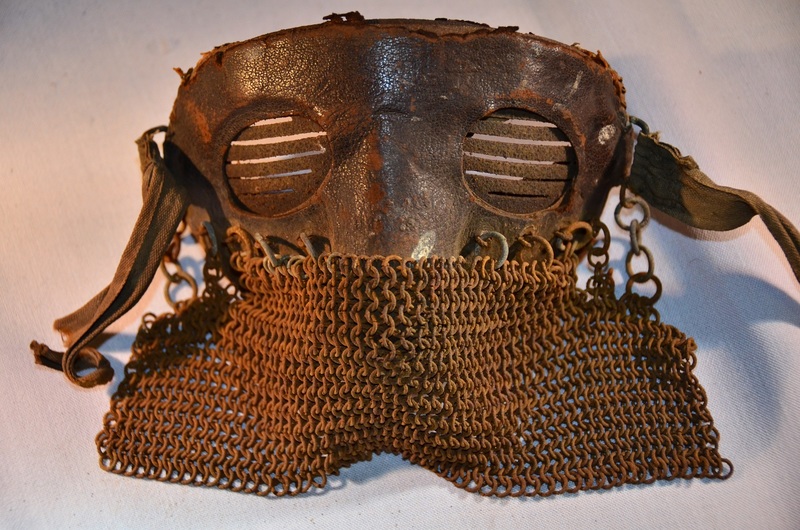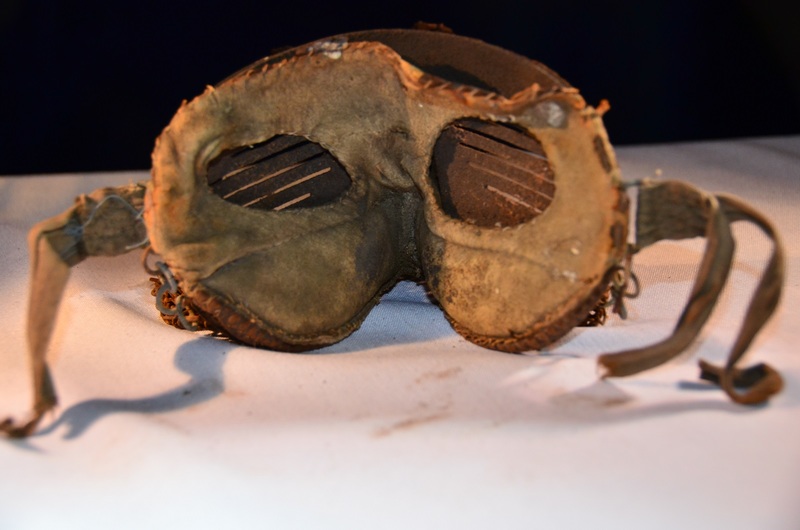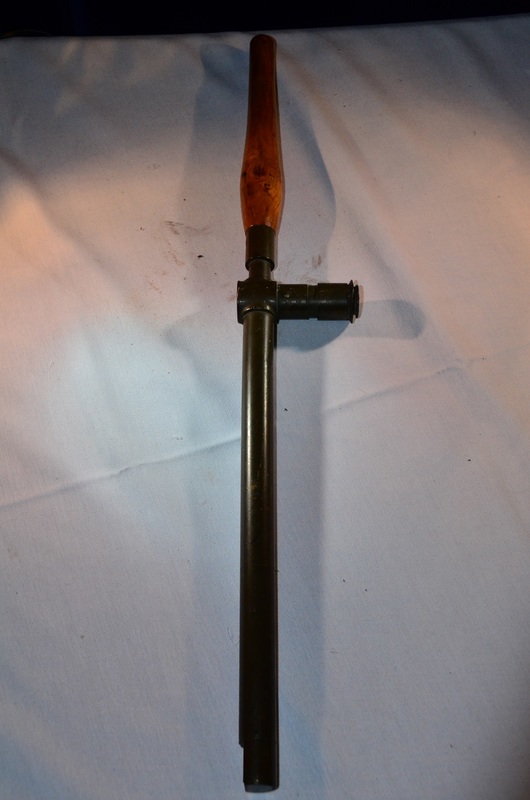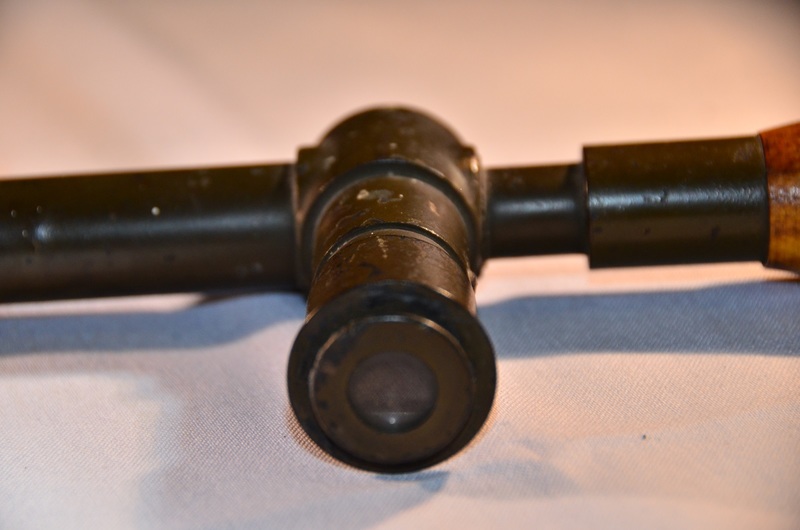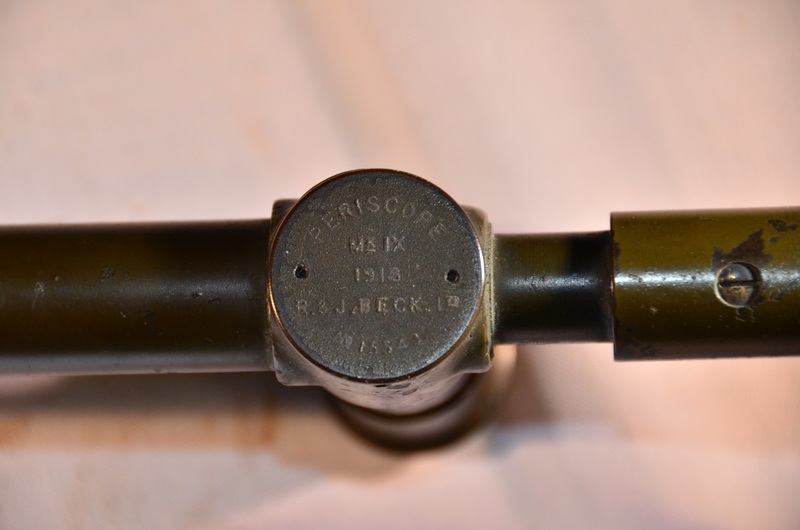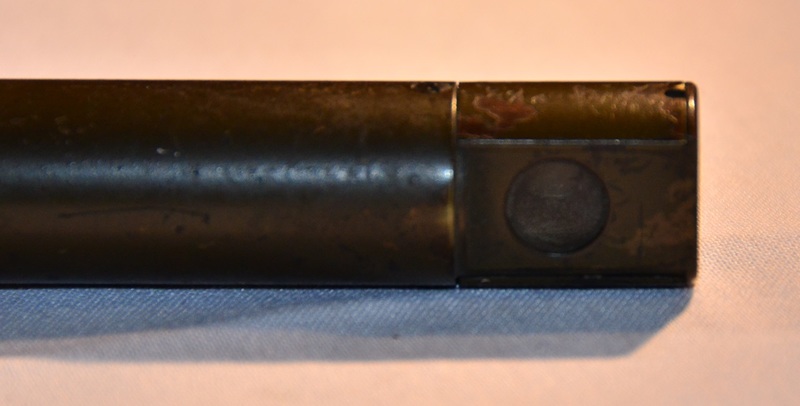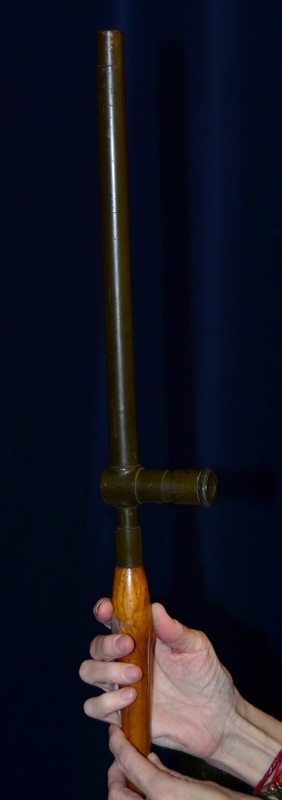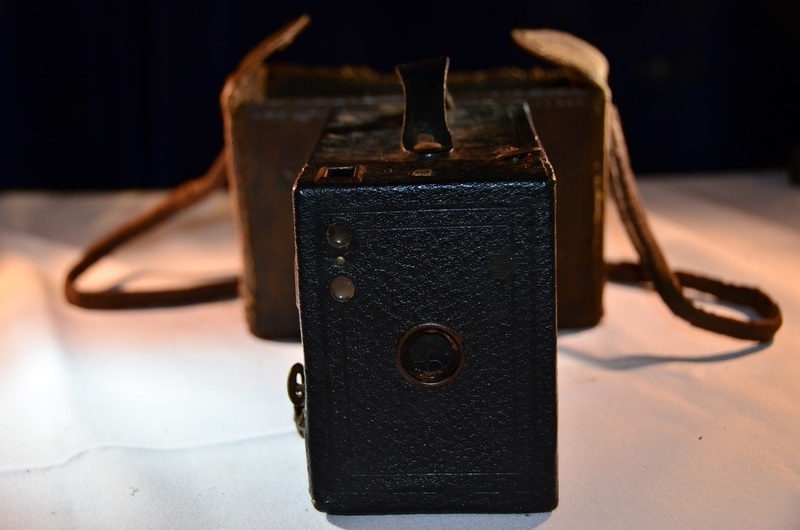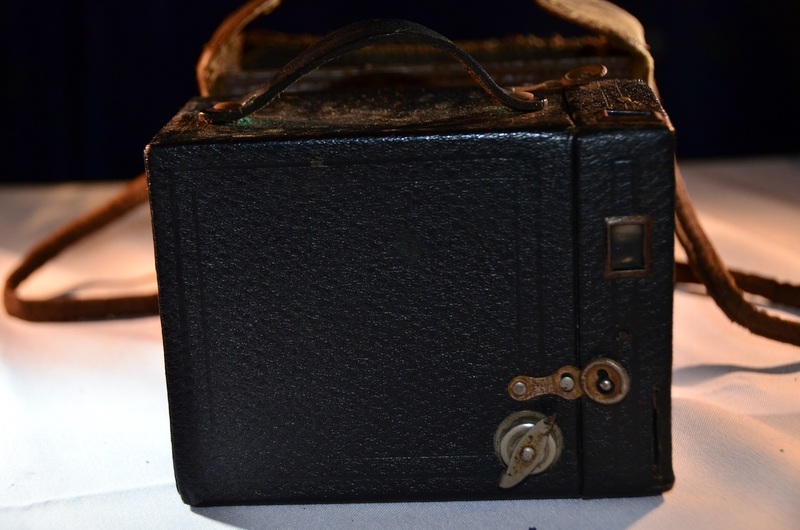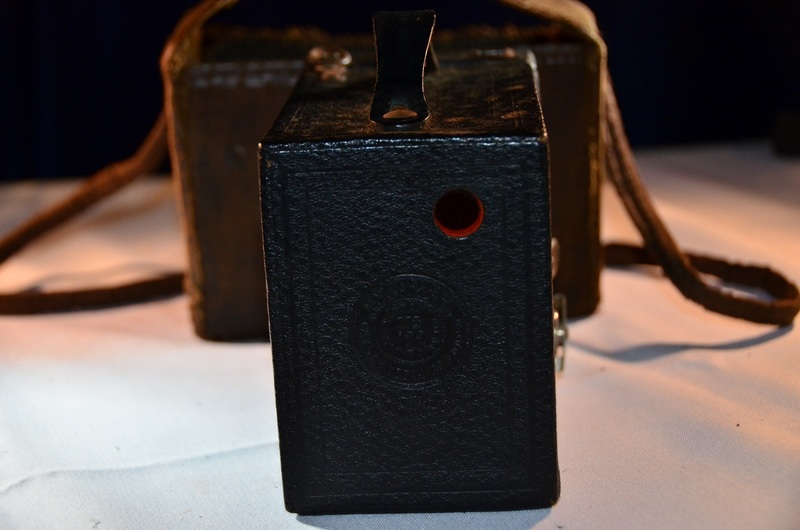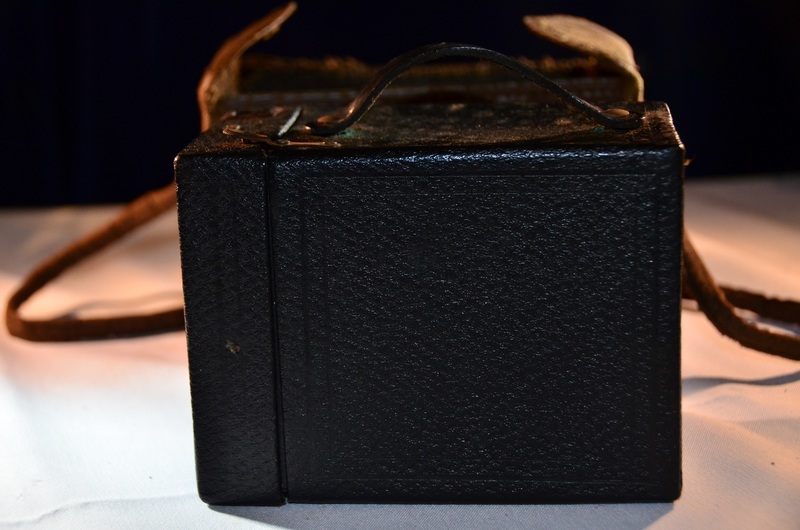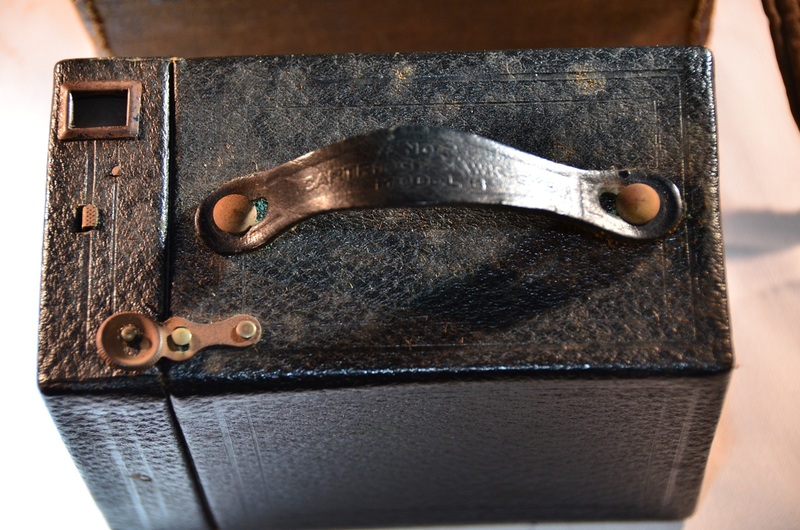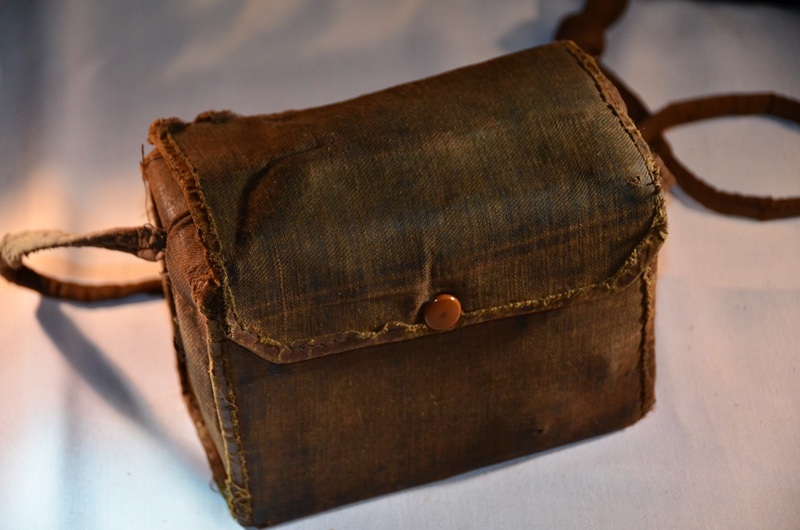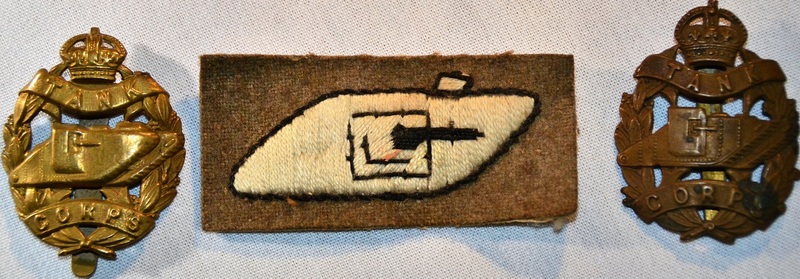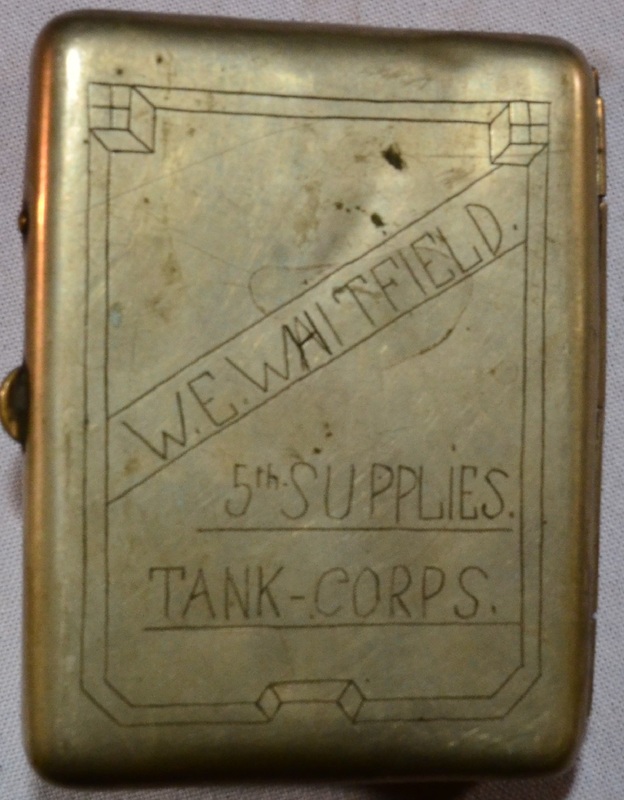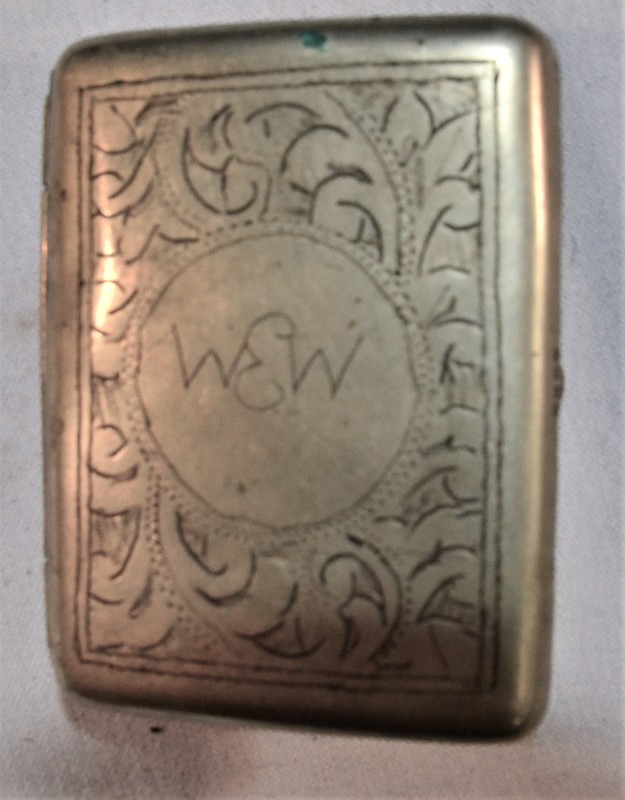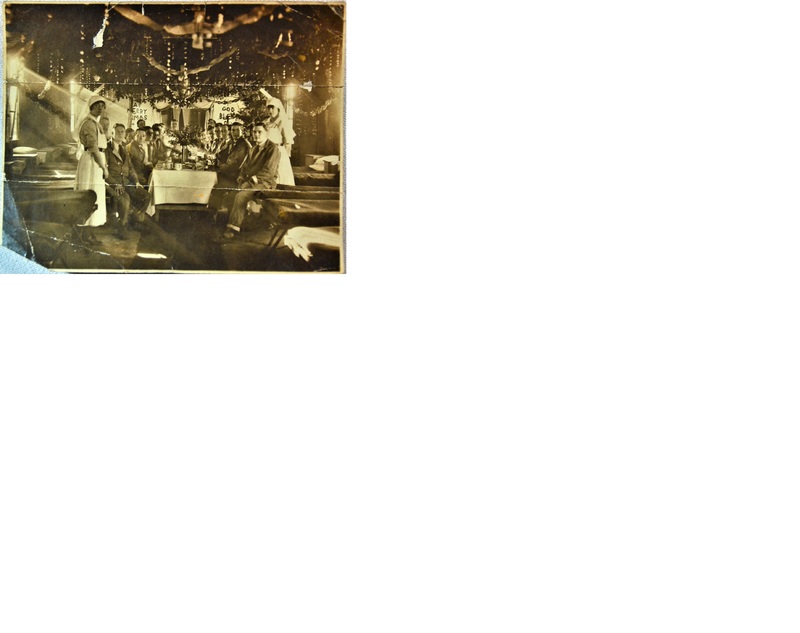3 Thackley brothers - the Whitfields part 4
Item
Title
3 Thackley brothers - the Whitfields part 4
Who?
William Edward (Bill) Whitfield
Item(s)
Photos, documents, pictures of objects (tank periscope, tank mask, Box Brownie camera, badges)
Story
On 1st February 1918 Bill was subject to a compulsory transfer to the Tank Corps with the rank of Gunner and sent to Bovington in Dorset, the location for the Tank Corps’ Depot and Central Schools. In his account book he notes that on February 26th Bill was admitted to hospital (‘Hos.’). His ‘Medical Record’ records his treatment for a sexually transmitted disease (Gonorrhoea) until 6th May, and during this interval no payments were recorded in his account book, until week ending 10th May. After a few weeks back at Bovington and a leave of 6 days, Bill was then transferred to No. 5 Company Tank Stores (week ending 15th June) and he finally went on active service overseas, arriving in France on 18th June 1918 (Service Record).
Bill’s account book now records he was stationed at a series of French villages and towns:
1st July, Blangy-sur-Ternoise a few miles from Hesdin, south-east of Boulogne, near where General Elles set up Tank Corps H.Q. in the nearby Chateau de Bermicourt;
29th July, place not legible, at this time the British were preparing for the largest Tank attack of the war, the Battle of Amiens which commenced on 8th August. It is likely that Bill’s unit was supporting this operation, particularly in light of his next move;
15th August, Heilly, between Corbie and Albert, near Méricourt l’Abbé just north of the River Somme – 5th Tank Stores had probably followed up the advance and was engaged on re-equipment, salvage and support work; in this area 10th Tank Battalion had supported 3rd Corps on and after 8th August.
6th September, Bapaume, a few miles north-east of his previous position, had been evacuated by the Germans on 26th August.
27th September, ‘In the field’, presumably this means east of Bapaume following the advance towards the Hindenburg Line.
It seems Bill did not see combat service, although this last entry indicates that his unit was not far behind the advance, as does the gap of more than a month in his pay record. The next entries show Bill was taken ill, confirmed by the ‘Casualty Form – Active Service’ in his file. On 10th October he was admitted to 48th Casualty Clearing Station suffering from ‘Myalgia’; 2 days later he was sent to 6th General Hospital at Rouen, and then to 74th General Hospital at Trouville (19th October). From there on 24th he was transferred to 13th Convalescent Depot and then was sent to T[ank[ S[tores] R[elief?] Depot’ on 5th December. While Bill was receiving treatment the war had come to an end. There was no question of releasing more than a million British and Dominion soldiers who were in France and Belgium. Peace would not be certain until Germany signed a treaty, and demobilisation had to be managed to avoid serious damage to the home economy which would already be suffering from the ending of war contracts.
Bill had not recovered fully for on 12th December he was admitted to 2nd Canadian General Hospital on the coast at Le Tréport where he spent Christmas. Edward Whitfield was keen to have Bill back at home as on 1st February 1919 he wrote to Bradford Employment Exchange: ‘I am willing and anxious to give him immediate employment.’ Bill’s accounts show him well enough to be allowed home leave in February 1919, travelling via Victoria Station. On 17th February, he sent a telegram to request an extension of his leave as ‘expect brother home next week.’ Since there is no disciplinary note in his record relating to this date, and the account book records his return to Le Tréport by 28th February, it has to be assumed that on this occasion Bill’s request was granted. Bill was discharged from hospital a little over 2 weeks later and was posted on 18th March 1919 to ‘Driving Camp’ (‘Sautricourt’) and then (27th March) ‘Driving & Maintenance School’. He moved again to Merlimont (on the coast) on 18th May where he joined No.1 Tank Stores Company. He went on leave again at the end of August. Bill incurred his first punishment on 24th June for being absent from his guard duty, an offence for which he was deprived of 14 days’ pay. He duly noted in his account book for 1st July ‘14 day’s pay’. As no evidence is recorded in the Service Record for this lapse it cannot be said whether he had a valid reason. At the end of August 1919 Bill went on leave to the U.K. again, and once more he sent a telegram on 11th September requesting another extension. The telegram in the Service Record is barely legible so the reason for his request cannot be read, but this time it was refused. Bill ignored this and did not return to his unit, which was now at Erin, until 16th September, 4 days overdue. This time the reckoning was 7 days’ Field Punishment No.2 and he was deprived of 4 day’s pay (recorded in his account book for 17th September). A soldier on FP2 could be kept in handcuffs and was subject to ‘labour, employment and restraint’.
Erin had been the location for the Tank Corps’ central workshops and stores since early 1917, where members of the Chinese Labour Corps assisted British soldiers of the corps. Tanks were overhauled, serviced and repaired around the village. It was natural that after the fighting finished they be parked up in the area. We get some idea of the work Bill was doing during this time from snapshots in the collection which he or a friend took. In the collection is a Box Brownie camera with its case. It is an assumption that he used it to take these snaps – although as he appears to be in some of them this may be an unwise one. One snap shows a Gun Carrier Mark 1 which has been adapted to take a crane. There is another tank behind it to the left. Another shows a British Mark IV (or later model) female tank on a railway flat-bed wagon. On the back it is said to have been taken at Pozieres (on the old Somme battlefield of 1916 and 1918), so it could have been taken when Bill was stationed at Bapaume, or he may have been sent there from Erin to remove tanks. A snap taken at Erin shows a French Renault FT17 tank, used by both the French and American forces but not to my knowledge by the B.E.F. The fourth snap is labelled in one hand ‘Erin’ and in another ‘Printed 26th December 1920’ (a year after Bill was demobilized). The 3 soldiers shown in front of Nissen huts cannot be identified as those in the other snaps.
Trench Art
Other items in the collection can be classified as ‘trench art’ and relate to Bill’s service in the Tank Corps. It cannot be said whether he decorated them himself, or acquired them from other soldiers.
The first item is his cigarette case which dates from his 1918 days with 5th Tank Supplies Company. On the reverse are his intials ‘WEW’. There are also two decorated shell cases, probably for the 6-pounder guns carried by the male tanks. One is labelled: ‘Tank Corps in France Souvenir of the Great War’; the other reads: ‘Tanks Corps 1918 – 1919 Souvenir from Merlimont Great War’. There are 2 decorative knives made from .303 bullets and brass cut from shell casings. Liz Hall remembers these sitting on their grand-parents’ mantelpiece.
Other items he brought back with him can be classified as souvenirs, even if they were taken from the stores and were War Department property! Tank Periscope Mark IX 1918, R & J Beck Ltd (a renowned British manufacturer of optical instruments), was used through one of the many revolver ports British tanks were provided with. The tank mask was worn by tank crews in action to protect their eyes and faces from ‘bullet splash’. This was the fragments of metal that detached from the inside of a tank’s plating and ricocheted around the interior when bullets hit the outside.
Demobilisation
Before the soldier left his unit he was medically examined and given Army Form Z22, which allowed him to make a claim for any form of disability arising from his military service. Bill’s Z22 shows he was examined at Erin on 20th December 1919 and did not claim any disability arising from his service. The reverse side of his form has no entries. He was also given a Certificate of Employment showing what he had done in the army, Z18. A Dispersal Certificate recorded personal and military information and also the state of his equipment. If he lost any of it after this point, the value would be deducted from his outstanding pay. Bill’s Protection Certificate was issued at the Ripon Dispersal Centre on Christmas Day 1919 and 3 stamps at the foot of the certificate relate to his cashing of his payment orders at Thackley Post Office – see his Soldier’s Demobilization Account. On arrival in England the man would move to a Dispersal Centre. This was a hutted or tented camp or barracks. Here he received a Z11 and a railway warrant or ticket to his home station. This certificate enabled the man to receive medical attention if necessary during his final leave. Bill received an advance of £2 at his Dispersal Station followed by payments on 31st December 1919, and on 7th January and 14th January 1920 which amounted to £32. 8/4d. He also received a credit of £1 when he handed in his Army greatcoat. Bill was transferred Class Z Army Reserve on 22nd January 1920 and in case of emergency he was to report to Tank Corps Depot at Wareham, Dorset. Now he was free to resume his life.
Bill’s account book now records he was stationed at a series of French villages and towns:
1st July, Blangy-sur-Ternoise a few miles from Hesdin, south-east of Boulogne, near where General Elles set up Tank Corps H.Q. in the nearby Chateau de Bermicourt;
29th July, place not legible, at this time the British were preparing for the largest Tank attack of the war, the Battle of Amiens which commenced on 8th August. It is likely that Bill’s unit was supporting this operation, particularly in light of his next move;
15th August, Heilly, between Corbie and Albert, near Méricourt l’Abbé just north of the River Somme – 5th Tank Stores had probably followed up the advance and was engaged on re-equipment, salvage and support work; in this area 10th Tank Battalion had supported 3rd Corps on and after 8th August.
6th September, Bapaume, a few miles north-east of his previous position, had been evacuated by the Germans on 26th August.
27th September, ‘In the field’, presumably this means east of Bapaume following the advance towards the Hindenburg Line.
It seems Bill did not see combat service, although this last entry indicates that his unit was not far behind the advance, as does the gap of more than a month in his pay record. The next entries show Bill was taken ill, confirmed by the ‘Casualty Form – Active Service’ in his file. On 10th October he was admitted to 48th Casualty Clearing Station suffering from ‘Myalgia’; 2 days later he was sent to 6th General Hospital at Rouen, and then to 74th General Hospital at Trouville (19th October). From there on 24th he was transferred to 13th Convalescent Depot and then was sent to T[ank[ S[tores] R[elief?] Depot’ on 5th December. While Bill was receiving treatment the war had come to an end. There was no question of releasing more than a million British and Dominion soldiers who were in France and Belgium. Peace would not be certain until Germany signed a treaty, and demobilisation had to be managed to avoid serious damage to the home economy which would already be suffering from the ending of war contracts.
Bill had not recovered fully for on 12th December he was admitted to 2nd Canadian General Hospital on the coast at Le Tréport where he spent Christmas. Edward Whitfield was keen to have Bill back at home as on 1st February 1919 he wrote to Bradford Employment Exchange: ‘I am willing and anxious to give him immediate employment.’ Bill’s accounts show him well enough to be allowed home leave in February 1919, travelling via Victoria Station. On 17th February, he sent a telegram to request an extension of his leave as ‘expect brother home next week.’ Since there is no disciplinary note in his record relating to this date, and the account book records his return to Le Tréport by 28th February, it has to be assumed that on this occasion Bill’s request was granted. Bill was discharged from hospital a little over 2 weeks later and was posted on 18th March 1919 to ‘Driving Camp’ (‘Sautricourt’) and then (27th March) ‘Driving & Maintenance School’. He moved again to Merlimont (on the coast) on 18th May where he joined No.1 Tank Stores Company. He went on leave again at the end of August. Bill incurred his first punishment on 24th June for being absent from his guard duty, an offence for which he was deprived of 14 days’ pay. He duly noted in his account book for 1st July ‘14 day’s pay’. As no evidence is recorded in the Service Record for this lapse it cannot be said whether he had a valid reason. At the end of August 1919 Bill went on leave to the U.K. again, and once more he sent a telegram on 11th September requesting another extension. The telegram in the Service Record is barely legible so the reason for his request cannot be read, but this time it was refused. Bill ignored this and did not return to his unit, which was now at Erin, until 16th September, 4 days overdue. This time the reckoning was 7 days’ Field Punishment No.2 and he was deprived of 4 day’s pay (recorded in his account book for 17th September). A soldier on FP2 could be kept in handcuffs and was subject to ‘labour, employment and restraint’.
Erin had been the location for the Tank Corps’ central workshops and stores since early 1917, where members of the Chinese Labour Corps assisted British soldiers of the corps. Tanks were overhauled, serviced and repaired around the village. It was natural that after the fighting finished they be parked up in the area. We get some idea of the work Bill was doing during this time from snapshots in the collection which he or a friend took. In the collection is a Box Brownie camera with its case. It is an assumption that he used it to take these snaps – although as he appears to be in some of them this may be an unwise one. One snap shows a Gun Carrier Mark 1 which has been adapted to take a crane. There is another tank behind it to the left. Another shows a British Mark IV (or later model) female tank on a railway flat-bed wagon. On the back it is said to have been taken at Pozieres (on the old Somme battlefield of 1916 and 1918), so it could have been taken when Bill was stationed at Bapaume, or he may have been sent there from Erin to remove tanks. A snap taken at Erin shows a French Renault FT17 tank, used by both the French and American forces but not to my knowledge by the B.E.F. The fourth snap is labelled in one hand ‘Erin’ and in another ‘Printed 26th December 1920’ (a year after Bill was demobilized). The 3 soldiers shown in front of Nissen huts cannot be identified as those in the other snaps.
Trench Art
Other items in the collection can be classified as ‘trench art’ and relate to Bill’s service in the Tank Corps. It cannot be said whether he decorated them himself, or acquired them from other soldiers.
The first item is his cigarette case which dates from his 1918 days with 5th Tank Supplies Company. On the reverse are his intials ‘WEW’. There are also two decorated shell cases, probably for the 6-pounder guns carried by the male tanks. One is labelled: ‘Tank Corps in France Souvenir of the Great War’; the other reads: ‘Tanks Corps 1918 – 1919 Souvenir from Merlimont Great War’. There are 2 decorative knives made from .303 bullets and brass cut from shell casings. Liz Hall remembers these sitting on their grand-parents’ mantelpiece.
Other items he brought back with him can be classified as souvenirs, even if they were taken from the stores and were War Department property! Tank Periscope Mark IX 1918, R & J Beck Ltd (a renowned British manufacturer of optical instruments), was used through one of the many revolver ports British tanks were provided with. The tank mask was worn by tank crews in action to protect their eyes and faces from ‘bullet splash’. This was the fragments of metal that detached from the inside of a tank’s plating and ricocheted around the interior when bullets hit the outside.
Demobilisation
Before the soldier left his unit he was medically examined and given Army Form Z22, which allowed him to make a claim for any form of disability arising from his military service. Bill’s Z22 shows he was examined at Erin on 20th December 1919 and did not claim any disability arising from his service. The reverse side of his form has no entries. He was also given a Certificate of Employment showing what he had done in the army, Z18. A Dispersal Certificate recorded personal and military information and also the state of his equipment. If he lost any of it after this point, the value would be deducted from his outstanding pay. Bill’s Protection Certificate was issued at the Ripon Dispersal Centre on Christmas Day 1919 and 3 stamps at the foot of the certificate relate to his cashing of his payment orders at Thackley Post Office – see his Soldier’s Demobilization Account. On arrival in England the man would move to a Dispersal Centre. This was a hutted or tented camp or barracks. Here he received a Z11 and a railway warrant or ticket to his home station. This certificate enabled the man to receive medical attention if necessary during his final leave. Bill received an advance of £2 at his Dispersal Station followed by payments on 31st December 1919, and on 7th January and 14th January 1920 which amounted to £32. 8/4d. He also received a credit of £1 when he handed in his Army greatcoat. Bill was transferred Class Z Army Reserve on 22nd January 1920 and in case of emergency he was to report to Tank Corps Depot at Wareham, Dorset. Now he was free to resume his life.
When?
1918-1919
Where?
France - Blangy-sur-Ternoise, Heilly, Bapaume, Trouville, Le Treport, Sautricourt, Merlimont, Erin
Contributor
Liz Hall
Collection Day
City Hall, Bradford (2/2/2019)
This item was submitted on March 14, 2019

